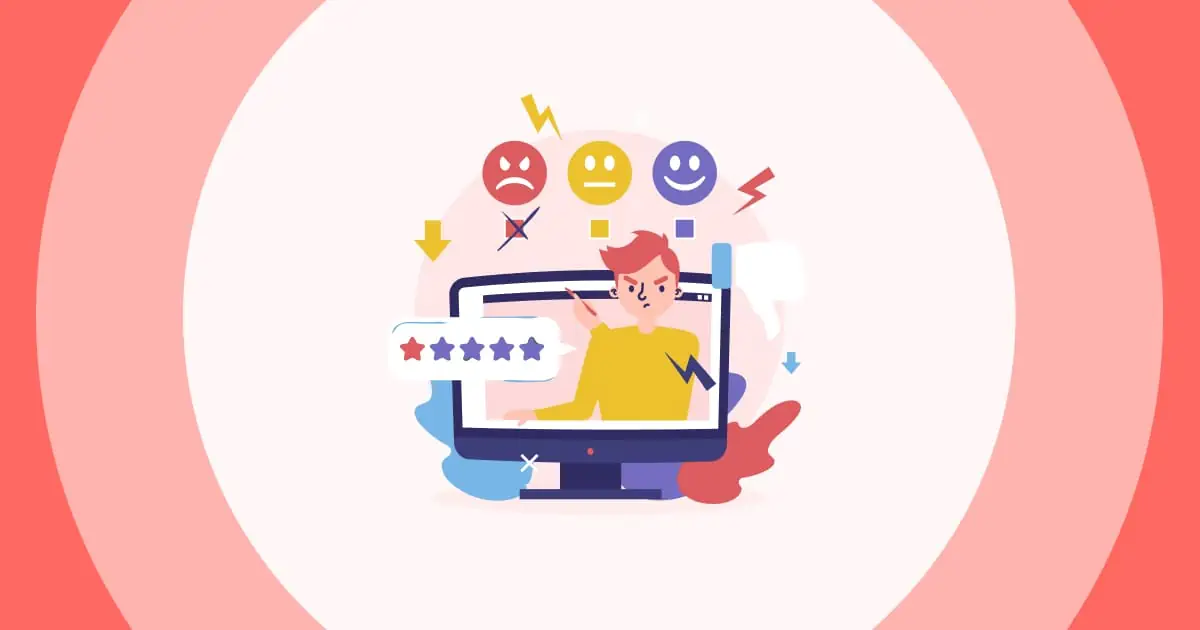プロの世界では、本当に違いを生み出す特別なスキルがあります。それは、 フィードバックを受け取る業績評価、同僚の提案、さらにはクライアントの批評など、フィードバックはあなたの潜在能力を引き出す鍵となります。
このブログ記事では、職場でフィードバックを受け取る術について詳しく解説します。これは、キャリアパスを変革し、あなた自身を力づけるスキルです。フィードバックを受け入れるだけでなく、それを活用して仕事でさらに優れた成果を上げる方法を探っていきましょう。
概要
| フィードバックを受け取るのに最適なクイズの種類は何ですか? | オープンエンドな質問 |
| フィードバックの別の言い方は何ですか? | 世界の動き |
| 顧客調査を作成するにはどのような種類のクイズを使用すればよいですか? | MCQ |
目次
- フィードバックを受け取るとはどういうことですか?
- なぜ一部の人々はフィードバックを受け取ることを好まなかったり恐れたりするのでしょうか?
- 防御的にならずにフィードバックを受け取るためのガイド
- 最終的な考え
- よくあるご質問


仲間のことをもっと知りましょう! 今すぐオンラインアンケートを設定してください。
AhaSlidesのクイズやゲームを使用して、楽しくインタラクティブなアンケートを作成し、職場、クラス、または小規模な集まりで世論を収集します。
🚀 無料アンケートを作成☁️
フィードバックを受け取るとはどういうことですか?
フィードバックを受け取るということは、自分のパフォーマンス、行動、仕事についての他の人からの情報、意見、評価を聞き、吸収し、受け入れる方法です。 これは、自分の長所、短所、改善すべき点を明らかにするため、個人的および専門的な成長にとって貴重なツールです。
フィードバックは、上司、同僚、友人、さらには顧客など、さまざまなところから寄せられます。フィードバックは、自分の行動が周囲の人からどのように見られているかを理解し、どのように前向きな変化を起こせるかを理解する上で非常に重要です。
なぜ一部の人々はフィードバックを受け取ることを好まなかったり恐れたりするのでしょうか?
フィードバックを受けることに不安や恐怖を感じるのは、ごく普通の、そしてよくある経験です。こうした反応の背後にある理由をいくつか見ていきましょう。
- 過去の悪い経験。 過去に厳しく批判されたり判断されたりした人は、再び同じことが起こるのではないかと恐れるかもしれません。
- 判断されることへの恐怖。 フィードバックは個人的な攻撃のように感じられることもあり、人は自己防衛的になったり、自分が十分ではないと感じたりすることがあります。こうした恐怖は、肯定的な自己イメージを維持し、自尊心を守りたいという願望から生じることが多いのです。
- 傷つきやすい気持ち。 良いものとそうでないものが両方入った秘密の箱を開けるような感じを想像してみてください。そういう感覚を嫌う人もいるでしょう。
- 自分自身を信じていない。 自信の低い人は、フィードバックを恐れることがあります。それは、フィードバックが自分の自信のなさを裏付けるものだと捉えているからです。自分が思っていたほど有能ではないことが露呈したように感じ、不安感に陥ってしまうのです。

防御的にならずにフィードバックを受け取るためのガイド
フィードバックを得ることは、自己改善のための宝の地図を手に入れるようなものです。しかし、時には身構えてしまうこともあります。ご安心ください。ガイドをご紹介します。
1/ 精神的な障壁を克服する:
最も困難な戦いは、しばしば私たちの心の中で繰り広げられます。そのため、第一歩は、フィードバックを客観的に受け止めるための不可欠な基盤となる、成長志向を育むことです。以下のエクササイズで、このアプローチを体験してください。
- 一時停止して呼吸する: ちょっと時間を取ってください。深呼吸をすると冷静さを保つことができます。
- まず聞いてください: 言われたことを聞いてください。それはあなた自身のことではなく、あなたの行動についてです。
- 好奇心を持ち続けてください: 質問をして、相手の視点を理解しましょう。それはパズルのピースのようなものです。
- 即時返信なし: 反論するのはやめましょう。反応する前に、じっくり考えましょう。
- 別々の感情: フィードバックは攻撃ではありません。成長のためであり、批判のためではありません。
- 感謝と反省: フィードバックに感謝しましょう。その後、どのように活用するか考えましょう。
2/フィードバックを求める:
成長への道を歩み始めるには、フィードバックを求めることが必要です。その力を活用するために、大胆な一歩を踏み出しましょう。
- 入力を招待: ためらわずにフィードバックを求めましょう。率直な意見が貴重な洞察を生み出します。
- 適切な時間を選択してください: 双方が建設的な対話を行える適切なタイミングを見つけましょう。
- フォーカスを指定: 会話を特定の領域に向け、対象を絞ったフィードバックを可能にします。
- アクティブリスニング: 注意深く耳を傾け、中断することなく、共有された洞察を吸収してください。
- 明確化と調査: 必要であれば、明確さを追求してください。相手の視点を完全に理解するために、さらに深く掘り下げてください。
3/ 振り返る:
フィードバックを振り返ることは、効果的にフィードバックを受け取るプロセスにおいて重要なステップです。時間をかけて受け取ったフィードバックをじっくりと検討し、その妥当性と関連性を分析し、スキルとパフォーマンスの向上にどのように活用できるかを判断することが重要です。

4/ フィードバックを行動に移す:
フィードバックに基づいた具体的なステップを明確に示し、達成可能な目標を設定した実践的な改善戦略を策定しましょう。こうした積極的な姿勢は、個人的かつ専門的な成長へのあなたの献身を示すものです。
フィードバックを改善のためのツールに変えましょう。それを活用してスキル、知識、パフォーマンスを強化し、前進へと導きましょう。
5/感謝の気持ちを表す:
フィードバックの内容に関わらず、フィードバックを提供してくれた人に感謝の意を表しましょう。感謝の気持ちを表すことで、フィードバックを大切にし、継続的な改善に尽力していることが伝わります。
ここではいくつかの例は、次のとおりです。
- 正のフィードバック: プロジェクトにおける私の徹底ぶりを評価していただき、ありがとうございます。あなたの温かいお言葉が、仕事へのこのレベルの献身を維持するための原動力となっています。
- 建設的な批評: 「私のプレゼンテーションについて貴重なご意見をいただき、ありがとうございます。皆様からのフィードバックは、私のプレゼンテーションの質を高め、聴衆との繋がりを深める上で、間違いなく役立つでしょう。」
6/ 自己思いやりを実践する:
フィードバックを受ける際は、自分自身に優しく接しましょう。完璧な人間などいないことを理解し、誰もが成長していくのです。フィードバックを自己評価の尺度ではなく、成長の原動力と捉え、自分自身への思いやりを大切にしましょう。

フィードバックに関する詳細な情報については、当社の包括的な 効果的にフィードバックを与える方法. コラボレーションと成長を促進するために貴重な情報を提供する技術を学びます。
最終的な考え
フィードバックを受けることで、私たちは自分の失敗から学び、スキルを向上させることができます。また、他者が私たちをどのように見ているか、そしてどのようにより良いコミュニケーションやコラボレーションを実現できるかについての洞察も得られます。
AhaSlidesは、フィードバックの受け取り能力を高める機会を提供してくれることを忘れないでください。AhaSlidesの インタラクティブ機能活発な議論が展開され、会議では多様な視点からの意見をもらい、フィードバックを効果的に吸収・活用する能力を磨くことができます。
よくあるご質問
フィードバックを受け取る例は何ですか?
職場でプレゼンテーションを終えたところを想像してみてください。その後、同僚が近づいてきて、「素晴らしいプレゼンテーションでした!要点が明確で、聴衆をうまく引きつけていましたね。これからも頑張ってください!」と言ってくれました。
フィードバックを受け取る良い方法は何ですか?
フィードバックを受け取るための良い方法には、精神的な障壁を克服すること、フィードバックを求めること、目的を持って振り返ること、フィードバックを行動に移すこと、感謝の気持ちを表すこと、そして自己思いやりを実践することが含まれます。
フィードバックを受け取るとは何ですか?
フィードバックを受け取るということは、自分のパフォーマンス、行動、仕事についての他の人からの情報、意見、評価を聞き、吸収し、受け入れる方法です。








